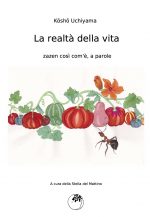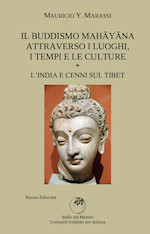Buddha’s message is as fertile and luxuriant as life and it is as multifarious and diverse as the cultures within which it grew. To be able to transmit it effectively, early Buddhism wove together form and content in a truly original way. Nowhere is this clearer than in the five hundred and forty-seven stories contained in the Jataka, [Stories of the] Birth [of Buddha],1 which were completed around the third century b.C. and count therefore among the earliest examples of Buddhist art. 2
The form of storytelling is particularly suited to Buddha’s teaching. It is both vital and vibrant and it involves the listener actively in some kind of complicity. The stories, told, memorized and told again over and over spring from the same essential source but are never identical. No story is repeated exactly, with the same words and the same intonation, as another. Each story weaves its way from its creator through the voice of the storyteller to the heart of those who listen. By being recited, the stories of the Jataka were never dead word.
Also, oral transmission encourages the listeners to participate. One must fill in the gaps in the story with one’s own fantasy, one’s own memory of earlier listenings, and bring every word heard back to one’s own personal experience. The message is not standardized. It is intimately individual. Think of what happens to us any time we hear about the lilies of the field and of the fowls of the air 3. Thanks to the art of the evangelist, behind the hidden meaning we perceive the unique and gratuitous splendor that springs from life.
In addition, these stories, taken together, hammer home a clear message. They paint in full colors the image of the Universal Community, one of the critical concepts of Buddhism, and the subject of many of his sermons. The stories contained in the Jataka tell in plain language the lives of hundreds of manifestations of Buddha, as he appeared in the shape of a king, a woman, a merchant, a pariah, or even an animal, an elephant or an antelope. The Community, or Communion, symbolized by the variety and richness of the forms of life offered by India’s bountiful nature in its vegetable, animal, human and superhuman worlds, was the idealized subject of Buddhist art long before the Buddha was represented in human form, and stories bring this wealth up very clearly.
These are then the two deep wells, the two most important sources of inspiration of Indian Buddhist art: the ideal Community, which is constituted by the whole cosmos, and the invisible presence of Buddha’s spirit in every life, be it real or imaginary, as the only vehicle or the only way of salvation for all.
While the first instances of representation of the Universal Community were in storytelling, and those which followed soon after were in plastic arts, the type of message they conveyed did not change that much. Soon after the funerary monuments, which are the earliest extant examples of Buddhist statuary art, there appeared the stone bas-reliefs representing dozens of living forms: elephants, peacocks, tigers, monkeys, gods, and kings with their followings. In the midst of this teeming life, an empty space, or a sign was usually included, to underline the fact that it was impossible to constrain the formless into a physical shape.
Later, this shape began to be reproduced, and in the shape of a Greek God. The masonry walls of the first monasteries that were built in the North and Northwest of India provided the wide surfaces needed for the first paintings. The influence of Hellenism4 on Buddhist visual arts became apparent in this period, between the second and third century b.C. It was as a result of this influence, that the Buddha, “the light of the world that dispels the darkness of illusion” began to be shown in the midst of the assembly of monks, dressed up in the traditional Indian garb but looking like Apollo.
It must be kept in mind, however, that the statues of the Buddha were not the portraits of Mr. Sakyamuni Gautama. They represented the Dharma embodied in the human form. Therefore, they were not statues (or paintings) like all others. Their proportions, their expressions, the features of their faces, and the emotions they sought to instigate in the viewers expressed, when they were successful, the transcendence by which they had been inspired. In fact, there and then, artist and religious devotee, art and religion began to overlap.
| « By the way of introduction… | Mahāyāna and the Lotus Sūtra » |
[1] It is an indicator of their vitality that one should find them in very far-flung lands, and centuries later than when they were composed. Herodotus had read at least some of them, and they contain an early version of Solomon’s verdict (Jataka 546). We find echoes of them in Aesop’s fables, in La Fontaine’s Fables and in Chaucer’s The Canterbury Tales. Many of the tales told in the Jatakas found their way in the Mahabharata, in the Panchatantra and in the Ramayana. Even the Lotus Sutra, a fundamental Buddhist text whose first draft was completed by the first century b.C., said that one of the ways Buddha taught his disciples was through the Jataka.
[2] For the record, more than half of these stories were produced in the world of Hindu asceticism, but were modified in the course of the centuries and through innumerable retelling, have become vehicles for the message of the Buddha, the bodhisattva par excellence.
[3] “Behold the fowls of the air: for they sow not, neither do they reap, nor gather into barns; yet your heavenly Father feedeth them. Are ye not much better than they? 6:27 Which of you by taking thought can add one cubit unto his stature? 6:28 And why take ye thought for raiment? Consider the lilies of the field, how they grow; they toil not, neither do they spin.” Matthew, 6; 26,28
[4] Alexander the Great conquered Bactriana (Uzbekistan and Northern Afghanistan), Sogdiana (Southern Afghanistan and South-Western Pakistan) and Northwest India in 326, and left behind a cultural mix. It has often been stated that the first images of Buddha were only Hellenistic. However, statues found in Southern India in a different style, suggest that there were two different schools of Buddhist art. It may be added that this latter school in turn influenced Buddhist art in Thailand, Burma, China, Korea and Japan. See M. Anesaki, Buddhist art in its relation to Buddhist ideals. Houghton Miffin and Co. Boston and New York, 1915, page 12.
Se volete, lasciate un commento.
You must be logged in to post a comment.







